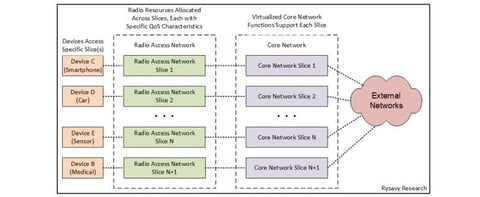While the claws are coming out, both pro and con, over net neutrality once again, one analyst says the FCC’s proposed order to repeal the 2015 Open Internet Order will be a catalyst for 5G.
Peter Rysavy, president of Rysavy Research and a FierceWireless contributor, says the proposal put forth by FCC Chairman Ajit Pai will hasten the deployment of 5G network technologies and catalyze wireless network innovations. The proposal will be considered by the full commission at its Dec. 14 open meeting.
“5G will employ sophisticated mechanisms to handle different kinds of traffic flows, enabling 5G to address a wider range of use cases than prior technology generations, such as 3G and 4G,” he said in a statement. “Many of the applications envisioned for 5G are of a control nature, needing minimal delay and high reliability. These applications will depend on traffic prioritization, a capability constrained by current net neutrality rules.”
RELATED: FCC’s Pai circulates draft order to overturn net neutrality rules
Indeed, telecom companies opposed the Open Internet Rule that the FCC passed in 2015 under then-Chairman Tom Wheeler’s reign. Both Democratic commissioners, Mignon Clyburn and Jessica Rosenworcel, didn’t waste any time this week issuing statements blasting Pai’s proposal.

“The requirement that a heart monitor transmission to a hospital emergency room cannot be treated as any more special than a cat video is absurd,” according to an April 2017 Rysavy report (PDF).
Even with access to new spectrum and peak throughputs that will exceed 1 Gbps, 5G networks will need to manage latency, reliability, massive numbers of connections and a mix of stationary and mobile users, Rysavy added. “The United States has assumed global leadership in 4G and enjoys deep LTE penetration, leading smartphone platforms, and a vibrant application ecosystem. But globally, countries and companies are investing in and concentrating on what will come next with 5G. Constraining 5G with rules that unnecessarily undermine its potential is economic folly,” he said.
Others argue that Pai's proposal just gives control of the internet to big corporations and that mobile carriers have strong incentive to extract payments from online application and content providers, especially streaming video services that increasingly compete with their own content and affiliates.
“Mobile providers have a history of anticompetitive behavior that distorts the marketplace and harms consumers,” said Michael Calabrese, director of the Wireless Future Project at New America’s Open Technology Institute, in a statement. “As broadband traffic moves more and more to mobile devices, the lack of a level playing field will do increasing damage to the internet ecosystem. Removing non-discrimination protections for online content and services will result in toll gates that raise prices for consumers and stifle smaller, innovative, and non-profit web creators.”

